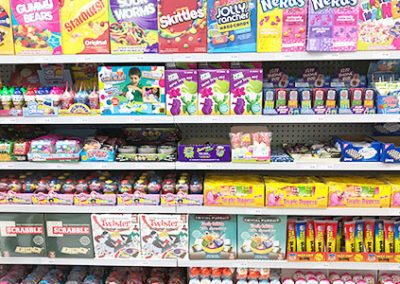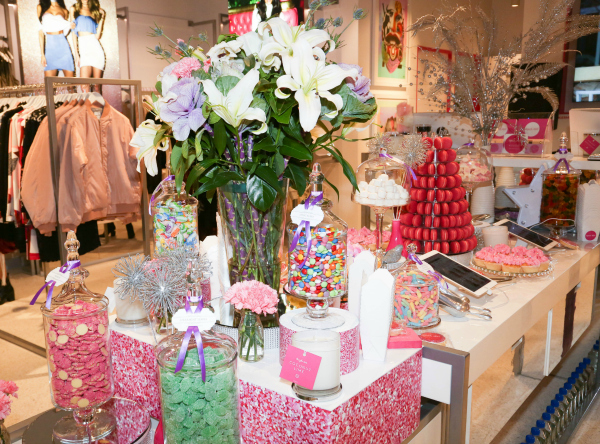I Luv Candi for Beginners
I Luv Candi for Beginners
Blog Article
A Biased View of I Luv Candi
Table of ContentsThe 8-Second Trick For I Luv CandiNot known Factual Statements About I Luv Candi Indicators on I Luv Candi You Need To KnowUnknown Facts About I Luv CandiI Luv Candi Things To Know Before You Get This
We have actually prepared a great deal of business strategies for this type of job. Here are the common client segments. Client Sector Summary Preferences Exactly How to Discover Them Kids Youthful customers aged 4-12 Colorful candies, gummy bears, lollipops Partner with neighborhood colleges, host kid-friendly events Teens Adolescents aged 13-19 Sour sweets, uniqueness things, fashionable deals with Engage on social media sites, team up with influencers Parents Grownups with children Organic and healthier options, timeless sweets Deal family-friendly promos, advertise in parenting magazines Pupils Institution of higher learning students Energy-boosting candies, inexpensive treats Partner with neighboring campuses, advertise during test periods Present Buyers Individuals trying to find presents Costs delicious chocolates, present baskets Develop distinctive display screens, provide customizable gift options In assessing the financial dynamics within our candy store, we have actually located that clients typically invest.Monitorings show that a normal customer frequents the shop. Specific periods, such as holidays and unique occasions, see a rise in repeat visits, whereas, during off-season months, the frequency may diminish. lolly shop maroochydore. Determining the life time worth of a typical customer at the candy shop, we estimate it to be
With these variables in factor to consider, we can reason that the typical earnings per consumer, over the training course of a year, hovers. The most successful customers for a candy shop are commonly households with young children.
This demographic has a tendency to make frequent acquisitions, raising the shop's revenue. To target and attract them, the sweet-shop can use colorful and spirited advertising approaches, such as vibrant screens, appealing promotions, and perhaps even organizing kid-friendly events or workshops. Developing an inviting and family-friendly atmosphere within the store can additionally improve the general experience.
Some Known Facts About I Luv Candi.
You can also approximate your very own revenue by using various presumptions with our monetary plan for a sweet-shop. Ordinary regular monthly revenue: $2,000 This type of candy store is frequently a tiny, family-run service, possibly recognized to residents yet not bring in lots of vacationers or passersby. The store could use a choice of common candies and a few homemade treats.
The store does not typically lug rare or costly items, concentrating rather on cost effective deals with in order to preserve routine sales. Assuming a typical spending of $5 per client and around 400 customers monthly, the regular monthly profits for this sweet shop would be about. Ordinary monthly profits: $20,000 This sweet-shop benefits from its critical location in a hectic metropolitan location, bring in a lot of clients trying to find pleasant extravagances as they shop.
In enhancement to its varied sweet choice, this store may also market associated products like gift baskets, candy bouquets, and novelty products, supplying multiple income streams - da bomb australia. The store's place calls for a higher allocate rent and staffing however leads to greater sales quantity. With an estimated typical investing of $10 per client and regarding 2,000 customers each month, this shop might produce
The Facts About I Luv Candi Revealed
Found in a major city and vacationer location, it's a big facility, commonly topped multiple floorings and possibly component of a national or international chain. The shop provides an immense selection of sweets, consisting of special and limited-edition products, and goods like well-known garments and accessories. It's not just a shop; it's a location.
These destinations help to attract countless visitors, dramatically raising potential sales. The operational costs for this kind of store are considerable as a result of the location, dimension, staff, and includes supplied. The high foot website traffic and typical investing can lead to substantial income. Thinking a typical acquisition of $20 per consumer and around 2,500 customers monthly, this front runner shop could accomplish.
Classification Examples of Expenses Ordinary Month-to-month Cost (Range in $) Tips to Lower Expenses Rent and Utilities Shop rent, electricity, water, gas $1,500 - $3,500 Take into consideration a smaller sized place, negotiate rental fee, and make use of energy-efficient illumination and appliances. Stock Sweet, snacks, product packaging products $2,000 - $5,000 Optimize inventory monitoring to decrease waste and track prominent things to avoid overstocking.
Advertising And Marketing Printed matter, on the internet ads, promos $500 - $1,500 Concentrate on affordable digital advertising and marketing and utilize social media sites systems completely free promo. da bomb. Insurance coverage Business liability insurance $100 - $300 Look around for affordable insurance policy rates and think about bundling policies. Tools and Maintenance Cash money registers, display shelves, repair services $200 - $600 Buy secondhand equipment when feasible and do regular upkeep to prolong devices life expectancy
Our I Luv Candi PDFs
Bank Card Handling Costs Fees for refining card repayments $100 - $300 Bargain reduced processing charges with payment processors or discover flat-rate why not try here options. Miscellaneous Office products, cleaning up products $100 - $300 Get in bulk and try to find price cuts on materials. A sweet-shop ends up being profitable when its overall revenue surpasses its complete set costs.

A big, well-located sweet shop would undoubtedly have a greater breakeven point than a tiny shop that doesn't need much earnings to cover their costs. Interested about the earnings of your candy store? Experiment with our user-friendly monetary strategy crafted for candy shops. Simply input your very own presumptions, and it will assist you compute the amount you require to gain in order to run a lucrative service.
Facts About I Luv Candi Revealed

Financial recessions that reduce customer investing can impact candy store sales and success, making it important for candy shops to handle their expenses and adapt to transforming market problems to stay lucrative. These threats are often consisted of in the SWOT evaluation for a sweet-shop. Gross margins and net margins are vital indications made use of to assess the earnings of a sweet-shop organization.
Basically, it's the revenue remaining after subtracting costs directly pertaining to the sweet inventory, such as acquisition prices from vendors, production prices (if the candies are homemade), and staff salaries for those associated with manufacturing or sales. Net margin, alternatively, elements in all the expenditures the candy store sustains, including indirect expenses like administrative costs, advertising, rent, and tax obligations.
Sweet stores generally have a typical gross margin.For circumstances, if your sweet shop gains $15,000 per month, your gross revenue would certainly be about 60% x $15,000 = $9,000. Consider a candy store that marketed 1,000 candy bars, with each bar priced at $2, making the overall profits $2,000.
Report this page